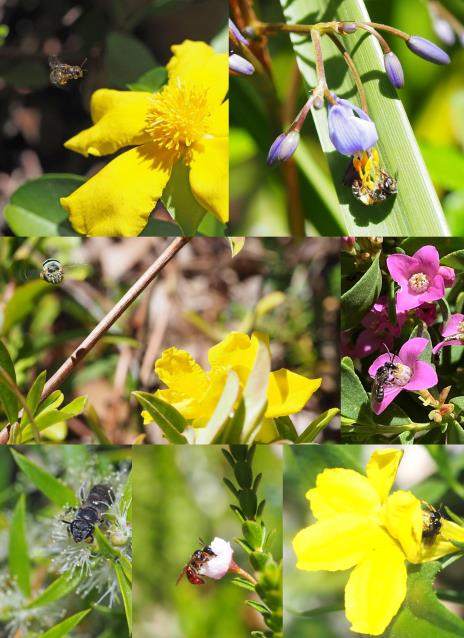Nurseries are where most of us acquire plants for our gardens, but evidence for which plants, and features of these plants, should be selected to create a pollinator garden, is often unavailable. To fill this lacuna, Dr Kit Prendergast – the Bee Babette – conducted standardised snapshot pollinator observations at Zanthorrea Nursery, Western Australia, over spring and summer. Of the 181 plant species available, there was drastic differences in their attractiveness to pollinators. Less than half even received visits.
A diversity of pollinator taxa were recorded but the introduced Apis mellifera dominated. Whilst this introduced species showed no preference for native vs exotic flowers, native bees exhibited a strong preference for native flowers. Overlap in visitation and therefore potential competition varied over the months. In general, flower species that had greater flower abundances were visited by more insects. This research revealed there are clear preferences by insects among garden plant species offered at nurseries. Visited plants, especially those by native bees, should be promoted, and planted in larger abundances. Similar surveys can be used to identify “pollinator friendly” flora for the public.
Citation: Kit SP (2022) The influence of plant species, origin and color of garden nursery flowers on the number and composition of pollinating insect visitors. Journal of Agricultural and Urban Entomology 38, 21-40

